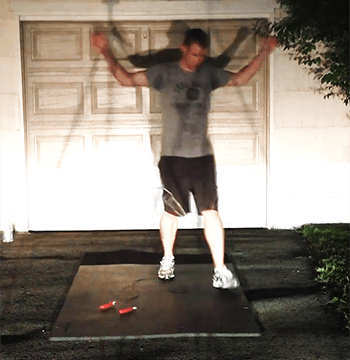The Power Through It Myth of Productivity – Debunked With the Pomodoro Technique

So I was out eating lunch a few days ago and being the observational (okay… nosy) person that I am, I was listening to a few conversations happening around me.
One in particular really interested me.
There was a group of dudes at a table close to me who looked like it took them all about an hour to get dressed. Suits, pressed shirts, greasy slicked hair, and blinged out watches that probably cost more than my house payment.
Ok, they must be doing something right… right?
What intrigued me is that they were talking about, “getting things done.”
Being a productivity enthusiast, I couldn’t help but put an ear to what they were saying.
Ugh. I wish I hadn’t…
Multiple facepalms were to be had in the coming 15 minutes. I guess they missed productivity training day. One phrase in particular that stood out was:
“When I really need to get something done, I just sit down and power through it bro, and I don’t get up until it’s finished.”
Ugh…
The Myth of Marathon Productivity Sessions
It sounds like it should work, right? I mean why take a break when you can just power through it and get a ton of stuff done.
You might be able to get a few things done for a couple of hours, but it turns out that after a prolonged period, it doesn’t work so well. In fact, it’s downright counterproductive in a lot of cases.
Humans can only focus for so long until their mind naturally starts to drift, and even becomes fatigued. After 45 minutes of prolonged focus, cortisol, otherwise known as the stress chemical, starts to build up in the body. If we don’t take breaks, it starts to attack us, mentally and physically.
We need brief mental breaks to refresh ourselves. Otherwise we will lose focus quicker and quicker as time goes on, the quality of our work will suffer, and we may even end up having to do things over.
Suddenly that four hours of what we thought was a good stretch of “productivity” turns into mediocre quality work, a headache, a completely drained body, and an overall attitude of “I need a day off.”
So what’s the answer?
The Pomodoro Technique
The Pomodoro technique is a way to maintain productivity over long periods of time without stressing yourself out, and while maintaining the quality of your focus.
I like to call it 50/10 – or 50 minutes of productivity, and 10 minutes of rest.
Some people call it 25/5 depending on their time intervals of output vs. rest, but the idea is the same.
Check out the graph to the below. Imagine the line represents your level of productivity capacity over time. You can see by using 50/10s (the dips represent your breaks), or the Pomodoro Technique, you can maintain a high level of productivity capacity over a sustained period of time.
That little break reboots your mind, which is like a jolt of energy to your level of focus.
It’s important you get up and move around during your break if you are sitting. This helps keep your state from getting too sedentary.

Now consider this. If you don’t take a break at all, like our suited wonder from the story at the beginning, your productivity capacity goes something like the bell curve below. It spikes for a bit, but then after about an hour, it falls to nearly nothing until you are finished.
After that initial hour, you may be getting things done, but you’re going to be draining yourself for the long term. You’re going to go home completely blitzed from your marathon session of output and it’s going to have a long-term effect on your health if you keep this up.
I won’t get into the dangers of sustained stress. Just google, “dangers of cortisol” if you’re interested.

Short Term Breaks, for Long Term Gains
It might seem a little counterintuitive, but it really works well.
Your 5-10 minute breaks within a sustained period of output will allow your mind and body to stay fresh, and will keep you from getting overly stressed out. At the end of the day your quality of work will be higher, you’ll feel better, and you won’t feel like you just got hit by a truck the next day.
While suit guy from above might get more done in that one day – he’s doomed for any kind of long-term output. It’s impossible to sustain that kind of stress without long-term ramifications.
You don’t have to use this technique every day of your life, but it’s great for those days when you need to really bite down and get some things done, and you don’t want to completely burn yourself out in the process.
What’s Next For You?
I really want you to learn this technique and implement it into your life. It’s allowed me to accomplish a lot of things in my life (like this blog post – done with two 50/10s) and it will for you too.
To get something from this post, I need you to do two things.
- Leave a comment about one key thing you want to get done this week. This is likely a long-term focus intensive task that requires you to really dig in – perhaps a creative project of some sort.
- For one week, employ the 50/10 method, to knock out this task in a few intervals. Note how you feel. Do you feel different than if you worked all the way through?
- For bonus points, comment back after you’ve gotten your task done, and let me know how it went. Did it help? Do you have questions?





Personally, I aim for 2-3 of these per day if my schedule allows. Any more than this gets to be a bit too intense with the level of focus they require. The reset period is good but they’re still pretty taxing on your brain.
The break depends on the person and the situation. Sometimes it’s 25-5. Others it’s 50-10. I will say the latter is much more acceptable in today’s workplaces.
Quick questions:
1. How many 50-10 sessions do you have before taking a long break?
2. How many minutes is your long break? 🙂
As long as you’re not burning yourself out and you give your brain a break, that’s fine as well. The concept is what matters here, not necessarily the exact timing.
Great technique. I personally use 45/15. Works fine. The 25/5 rule did´t seem to reboot my brain and stress wouldn´t go away. I mean, you can´t actually do anything relaxing in 5 minutes! (i plan to meditate in my 15 break, or take a power nap, what do you think, too much?)
Luis